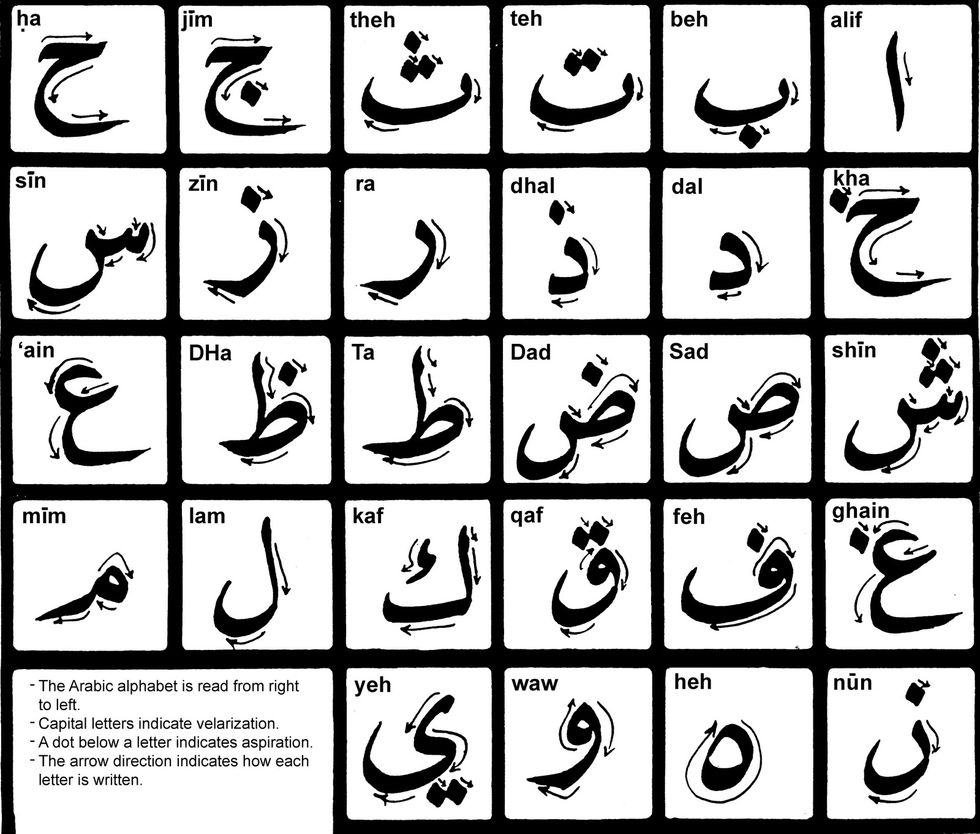In my previous article, I spoke briefly about the long-time motives behind my studying of the Arabic language and my experience thus far. As I continue my education, I have found myself always eager to share what I learn in Arabic with non-Arabic speakers. I have to say that sharing what I learn makes learning the language that much more exciting. To continue with the same sentiment, I thought to bring a little bit of Arabic to your eyes and your mind by giving a basic Arabic alphabet lesson.
Disclaimer: I am in no way, shape, or form at the level of proficiency to teach any constructive Arabic beyond the basics (Letters, Basic Grammar, Colors, Basic vocabulary words, Conversational phrases, etc…). I, too, am still learning the bulk of Arabic and still struggle a lot with it
The Arabic alphabet consists of 28 unique letters. Each letter is written differently contingent upon its placement in a word. Each letter has a form in the following four categories: (1) Initial Form (2) Medial Form (3) Final Form (4) Isolated Form. Without going too deep into the letters, I will just give you a brief lesson of the letters themselves in the Isolated Form.
To aid with the pronunciation of each letter, I have provided a chart that also provides a phonetic pronunciation of each letter. Each phonetic sounds above its respective letter.
Try saying each pronunciation slowly! See if you can get somewhat acquainted with the 28 letters of the Arabic alphabet. I encourage pronouncing it out loud as opposed to in your head because the physical sound is more likely to resonate with you than the non-auditory way.
It can become pretty difficult overtime, especially if you come from an English language background, to decipher the different sounds of similar sounding letters as some of the letters have very similar sounds but when paired with a variety of other letters and phrases begin to make a variety of unique sounds which help to decipher proper pronunciations.
As you see, the letters are to the far right of the page, as Arabic is written and read from the right to the left as opposed to English, which is read from the left to the right. This was definitely an aspect of Arabic that took a lot of getting used to, but as I am two years into my study of the language, it is like second nature to me. This is another aspect of Arabic that makes it unique.
I hope that you enjoyed this little lesson of the Arabic alphabet and that you were able to learn something new!



















